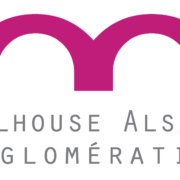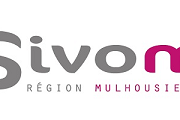At Desert Cove Recovery, we offer personalized treatment programs that consider genetic and environmental factors in the recovery process. If you or someone you know is struggling with alcoholism, understanding the role of genetics can help guide the path to recovery. This article has focused on questions about the relative importance of genetic and environmental influences on alcoholism. However, such questions are only a starting point for behavioral genetic research on alcoholism. Understanding more about how genes and environment act, co-act, and interact to determine differences in alcoholism risk remains a key goal of ongoing twin and adoption studies. Meanwhile, the evidence from twin and adoption studies has provided researchers with the impetus to investigate other methods of genetic alcoholism research, such as molecular genetics studies and the development of animal models.

Epigenetics and Alcohol Addiction

FAS is one of several disorders under the umbrella of fetal alcohol spectrum disorders (FASD) and is linked to a higher risk of developing alcohol use disorder (AUD) later in life. Beyond metabolism, genes influencing brain function also contribute to AUD risk. Genes involved in neurotransmitter systems, such https://ecosoberhouse.com/ as dopamine, serotonin, and GABA, play a role in reward pathways, impulse control, and stress response. For example, the GABRA2 gene has shown consistent associations with alcoholism in multiple studies. Variations in these genes can alter how the brain responds to alcohol, potentially increasing cravings or reducing the natural deterrents to excessive consumption.
- Other environmental factors that play a role include early life experiences (e.g., trauma, abuse), cultural and societal influences, life stressors, and access to alcohol.
- When you repeatedly consume alcohol, physiological changes in the body occur, reducing its sensitivity to alcohol’s effects.
- Alcoholism is a chronic disease characterized by an inability to control or stop drinking despite negative consequences.
- Genes related to alcoholism can affect the way a person metabolizes alcohol, their response to its effects, and their risk of developing an addiction.
- Research has shown that individuals with a family history of alcoholism have a higher risk of developing alcoholism themselves.
What Are The Protective Factors For AUD?
Researchers have identified an alcohol tolerance gene that makes a person more likely to abuse alcohol. A person who tolerates higher amounts of alcohol has a higher risk of AUD over time. While genetics can play a significant role in your overall AUD risk assessment, it isn’t the only factor that can elevate your chances of developing AUD. That doesn’t mean you’ll absolutely develop AUD if you have a family member living with the condition. You may have a higher genetic predisposition, but the underlying causes of AUD are multifaceted and complex. Your genetics can influence how likely you are to develop AUD, but there’s currently no evidence of a specific gene that directly causes AUD once you start drinking.
Alcoholism Risk Factors and the Evolution of the Research
While genetics plays a crucial role in the development of alcoholism, it is important to note that environmental factors, personal choices, and early interventions also contribute to whether an individual develops AUD. It is believed that certain genetic factors can increase a person’s risk of developing alcoholism. Additionally, genetics can impact the functioning of neurotransmitters in the brain, which play a crucial role in regulating mood and behavior. Genetic variations in neurotransmitter genes can make individuals more susceptible to alcohol-induced changes in brain chemistry, increasing the risk of developing psychiatric symptoms. One specific genetic factor that has been linked to co-occurring disorders is the dopamine receptor gene. Variations in the dopamine receptor gene can affect the way dopamine is received and processed in the brain, leading to a higher risk of developing addictive behaviors.
- Variations in the GABA receptor gene can affect the functioning of GABA in the brain, which in turn can impact an individual’s response to alcohol.
- Early intervention is particularly important for those with a genetic predisposition.
- Thus, about 80 percent of genes that are located closely together on a human chromosome also tend to be located in a cluster on a mouse chromosome.
- Further research is needed to unravel the intricacies of the genetic factors involved in alcohol addiction and to develop effective prevention and treatment strategies.
If a parent or sibling has struggled with alcoholism, your chances may what is Oxford House be higher — but that doesn’t mean you’re destined to become an alcoholic. In the context of AUD, heredity means that a predisposition to the disorder can be inherited from one’s biological family. Even without a genetic component, a person can still develop AUD when raised in a certain environment.
Genetic alcoholism, on the other hand, encompasses the broader influence of genetic factors on addiction susceptibility. We publish material that is researched, cited, edited and reviewed by licensed medical professionals. The information we provide is not intended to be a substitute for professional medical advice, diagnosis or treatment. It should not be used in place of the advice of your physician or other qualified healthcare provider. It should not be used in place of the advice of your physician or other qualified healthcare providers.
Epigenetics, the study of changes in gene expression without changes to the underlying DNA sequence, also holds promise for future alcoholism research. Understanding how environmental factors can influence gene expression and contribute to the development of alcoholism can provide valuable insights into prevention strategies. While it is known that there is a strong genetic component to the disease, the specific inheritance patterns are still not fully understood.
- This webpage has resources about genetics as it relates to alcohol use and health.
- Understanding the genetic underpinnings of AUD offers insights for individuals and families.
- In fact, alcohol preference in these animals is even more replicable across studies (and therefore, across environments) than brain weight (Wahlsten et al. 2006), suggesting that it is strongly influenced by genetic effects.
- Some mental health conditions may be a risk factor for developing alcohol use disorder, including clinical depression and schizophrenia, which also have a genetic component.
However, these findings provide valuable insights into the complex interplay between genetics and alcohol addiction, highlighting the need for a comprehensive and individualized approach to treatment. Additionally, genetic variations in the genes involved in the regulation of GABA receptors, which are responsible for inhibiting brain activity, can also impact alcohol withdrawal symptoms. Changes in the function of these receptors can lead to increased excitability in the brain, resulting in more intense withdrawal symptoms such as anxiety, tremors, and seizures. Once potential risk genes are identified, further research can be conducted to understand their specific roles in alcoholism. This may involve studying the effects of these genes on brain function, neurotransmitter systems, and other biological processes relevant to alcohol addiction. Researchers believe that multiple genes are involved in the predisposition to alcohol abuse.

In more serious cases, inpatient rehab or structured outpatient programs like those offered at Avenues Recovery, may be necessary. If you or a loved one suffer from Alcohol Use is alcoholism a genetic disease Disorder, reach out to us at Avenues Recovery so we can guide you on your road to recovery. Our dedicated professionals have helped over 40,000 individuals transform their lives, and they can help you too. Contact us today to join our vibrant recovery community and to begin your journey to health, happiness and sobriety. Take our free alcohol assessment to determine if you may have a drinking problem.





